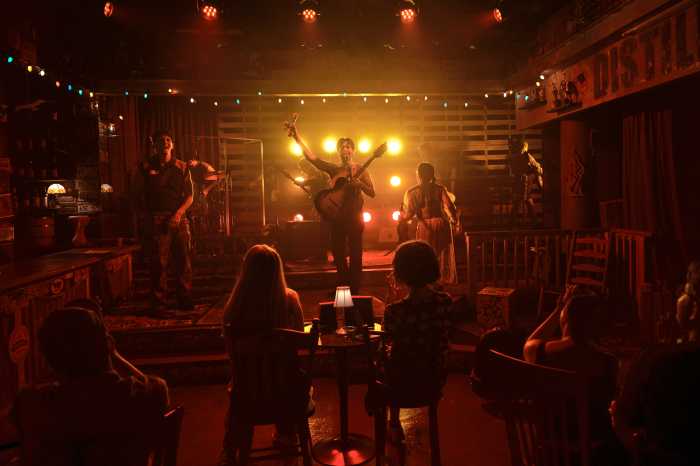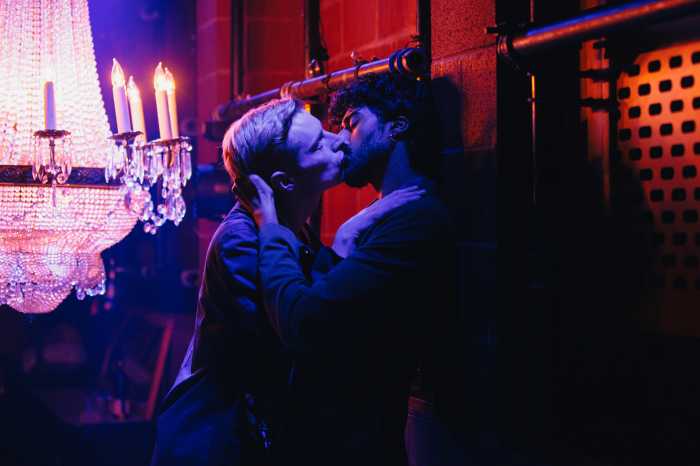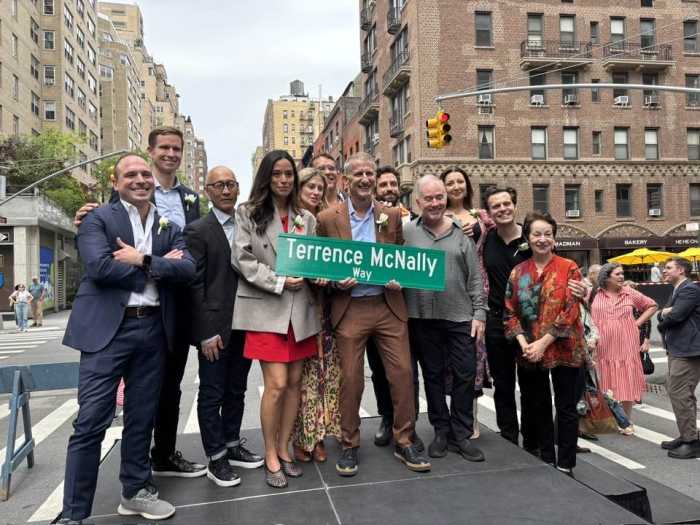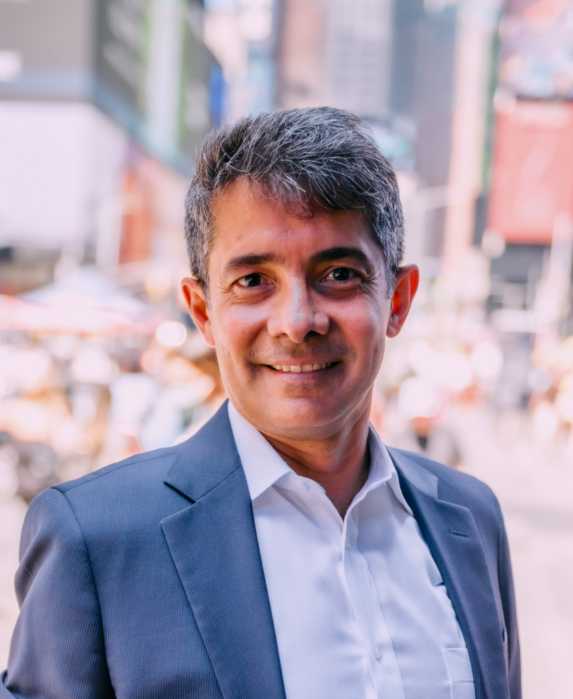A scene from Basil Twist’s “Symphonie Fantastique,” at the HERE Arts Center through June 17. | RICHARD TERMINE
Who knows where inspiration comes from? For master puppeteer Basil Twist, it came accidentally in the form of a small, broken aquarium found outside his East Village studio. He patched it up, filled it with water, attached a bit of fabric to a coat hanger, and started swirling it around in the water. And then he thought, “What else can I do?”
Two decades later that prophetic “What else?” has turned into a now-classic piece of art, “Symphonie Fantastique.” First performed in a small downstairs theater at the HERE Arts Center, where I saw it in 1998, the piece has since been seen around the world and in several revivals in New York. Now in honor of its 20th anniversary and the 25th anniversary of HERE, the piece is being revived. It is a moving and thrilling combination of abstract art, puppetry, and music.
For this revival, the piece is performed in a 1,000-gallon tank framed in black, so the audience only sees a wall of glass, behind which the magic happens. Berlioz’s symphony is played live by pianist Christopher O’Riley — positioned in front of the tank and the only human we see — though there are five puppeteers working behind the scenes. The puppets are all abstract. They’re simple pieces of fabric, feathers, and abstract plastic shapes. However, these quotidian objects take on lives of their own as they’re manipulated through the five movements of Berlioz’s symphony and transformed by movement and Andrew Hill’s lighting.
Adding life to inanimate objects is what makes “Symphonie Fantastique” so compelling.
Basil Twist revives “Symphonie Fantastique” for its 20th anniversary
As Twist told Gay City News, “Anything can be imbued with life and animated. It doesn’t have to be a representational thing. You can take all those materials and fabrics, and you pattern them and change them, and then you make the character come alive.”
Twist added that what he is doing is playing with the conventions of puppetry and the visual arts.
“One hundred years ago, Kandinsky was creating pure shapes and colors that weren’t necessarily referring to something, and I thought it would be a cool idea,” he explained.
Twist calls puppetry “one of the highest art forms,” and he’s been doing it throughout his life.
“When I was growing up I was shy and puppetry was sort of a coping mechanism,” he said. “I could hide behind the couch and stick a puppet up.”
When he was in school he did a book report on Ancient Greece and did it with a puppet in a toga. It was an ideal mechanism for engaging with people in an indirect way, he discovered.
Twist came to puppetry through his family. His mother was an amateur puppeteer and he is “squarely of the ‘Sesame Street’ generation.” His maternal grandfather, Griff Williams, was a big band leader who loved puppets and had a set of marionettes made of his band. (You can see the puppets on display in the basement area at HERE.) Twist never met his grandfather, but the marionettes were passed down to him, “and that sort of sealed the deal,” he said.
Twist has a long history of wonderful puppetry including some of my favorites, the Player King and Queen in “Hamlet” for The Public in Central Park, “Arias with a Twist,” and for the Broadway productions of “Charlie and the Chocolate Factory” and “Oh, Hello.” Starting out, Twist performed in clubs a lot, such as Boy Bar, Jackie 60, a variety of drag shows, and “an abstract thing to an Yma Sumac song.” The huge, positive response to that is what made him want to do a more extensive non-representational show, which in time led to “Symphonie Fantastique.”
In talking about the power of puppetry to move people and create art, Twist rejects the notion that when audiences enter a theater they accept various conventions.
“Suspension of disbelief, my ass,” he said. “It’s just belief.”
The experience of believing that a piece of silk can actually come alive is what creates the art. In performance, Twist added, “I feel this effect. A part of the brain is activated and [the audience] believes something exists. There is a life that they can see, and they connect with it.”
There is certainly no shortage of life in “Symphonie Fantastique.” It is wild and whimsical and a very welcome return.
“Having it be downtown in this really special, intimate venue really felt right,” Twist said. “I did this for a while and traveled it around the world, and now I’m happy to be home.”
SYMPHONIE FANTASTIQUE | HERE Arts Center, 145 Sixth Ave. at Dominick St. | Through Jun. 17: Tue.-Sat. at 8:30 p.m.; Sat.-Sun. at 4 p.m.; $30-$100; here.org or 866-811-4111 | 55 mins., no intermission































